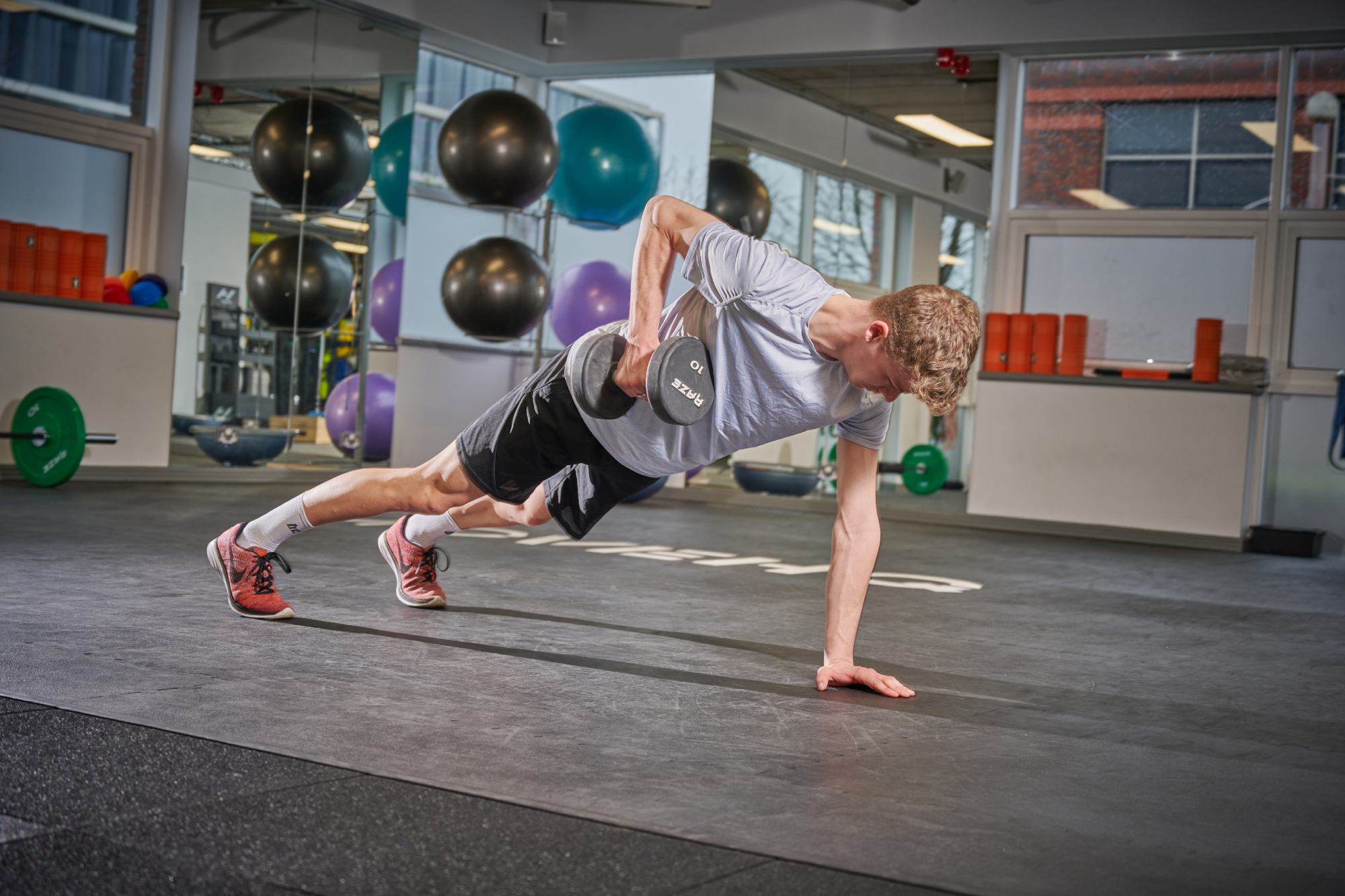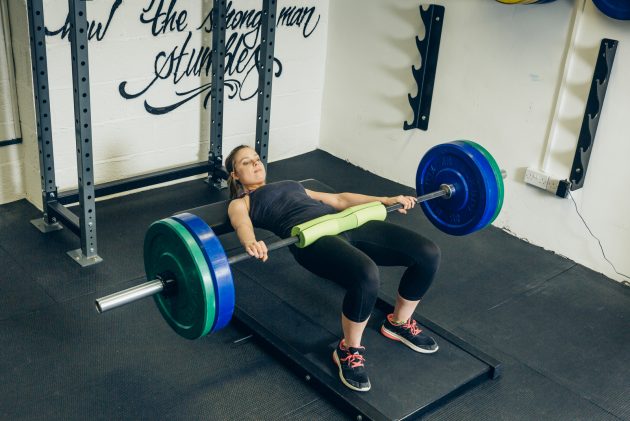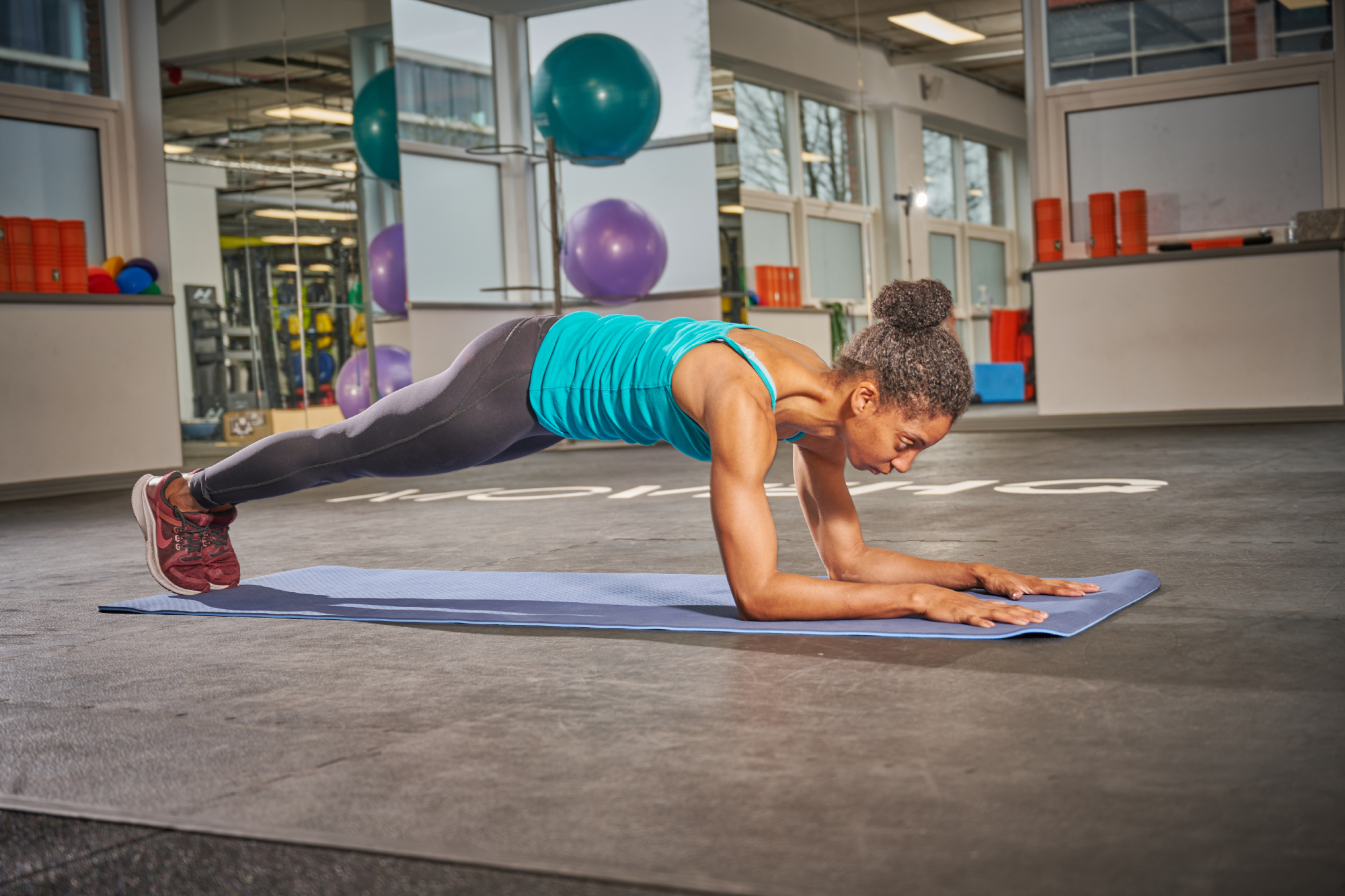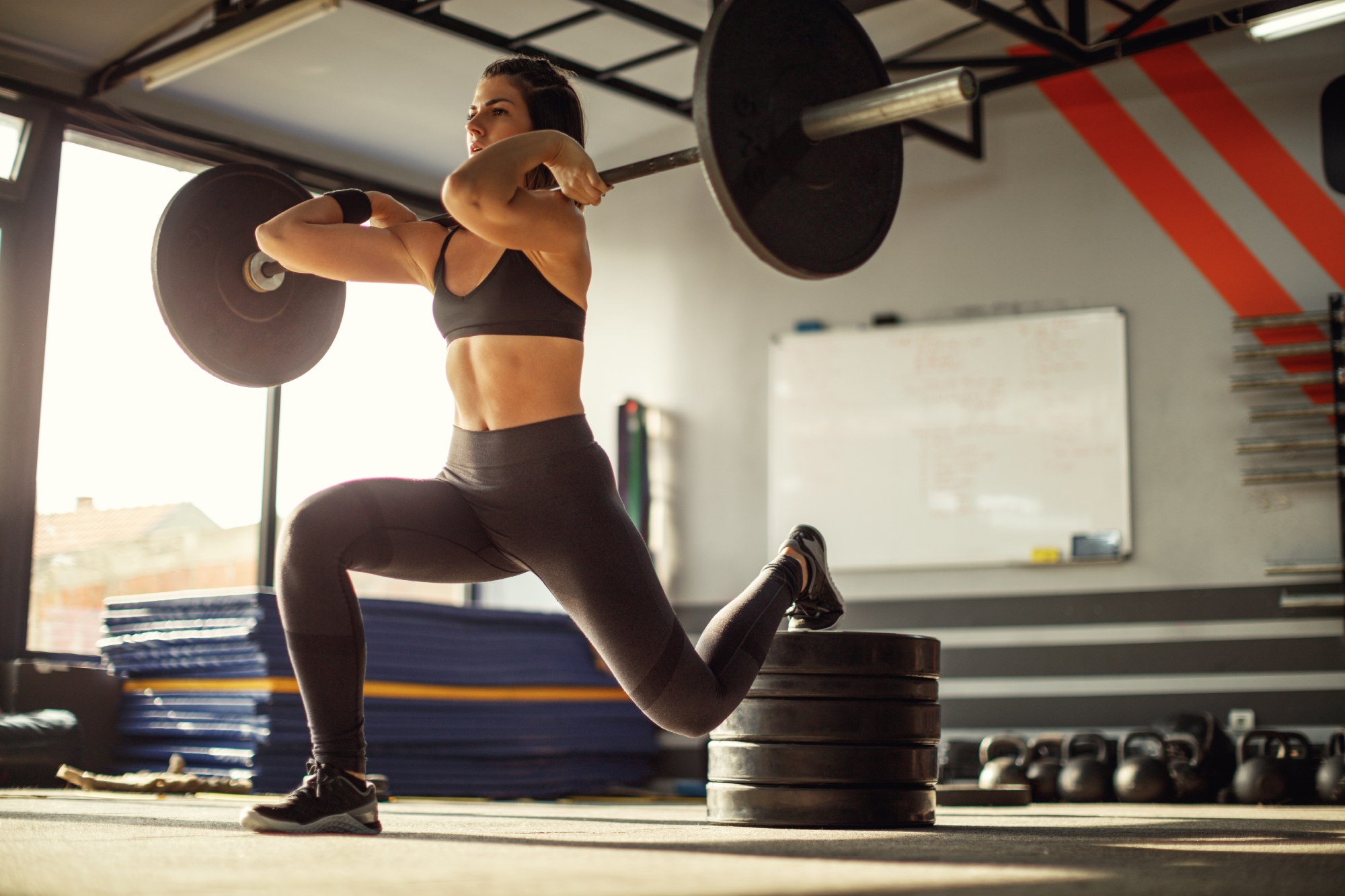
The phrase core training is ubiquitous across the fitness industry, tripping off the tongue all too easily as the solution to almost every problem. Lower back hurts on a ride: ‘Have you done your core training?’ Struggling to push higher peak power: ‘Have you done your core training?’ Whether you’re not aero enough in your time trial position, your neck aches on long rides, your knee twinges or you get saddle sores, at some point someone will tell you the problem lies with your core.
Before we assess whether they’re right or wrong, let’s define our terms: what is your core and what is core training? Physiotherapist and bikefit expert Phil Burt, author of Bike Fit and Strength and Conditioning for Cyclists, has worked with many of Britain’s top professionals as well as countless amateur racers. “Core isn’t something you will find in any anatomy book,” Burt begins. “What is core? I still haven’t heard a definitive answer.” Put on the spot, most people define ‘core training’ as exercises related to the trunk area, principally the abdominals.
Burt argues that, counter to this vagueness, it is specificity that matters for cyclists. “Our hands have to hold the handlebars and feet have to touch the pedals,” he says, implying that, as long as your core is strong enough to hold your position, any greater strength may be unnecessary. Core means different things in different sports – a shot putter’s core needs to be able to engage with rotational forces, a cyclist’s core is required to stabilise the upper body. Burt calls into question whether an athlete needs balance, proprioception and ‘core’ beyond the demands of their sport.
He jokingly points out that ability on the bike does not transfer to combat skills. “Have you ever watched a professional race and seen two cyclists fighting at a finish line? It is hilarious – they fall over when they get off their bikes!” The skill and souplesse demonstrated in the saddle seldom translates to other sports, raising a doubt over whether having a superstrong core is indispensable for cyclists. “I’d love to know where the core trend originally came from,” adds Burt. “It makes intuitive sense, which is why so many people buy into it, but it needs to be picked apart.”
Strength beats core
Picking apart the benefits of core training is something sport scientist and professional cycle coach Sebastian Sitko feels strongly about. A lecturer at the University of Zaragoza in Spain, Sitko holds a PhD in sport science and as a coach has worked with over 200 professional and amateur athletes. “The world of cycling is often built on dogmas and assumptions, many of which lack objective evidence,” he says. “For instance, it is widely accepted that spending hours in a plank position will somehow improve our performance on a bicycle.” Sitko’s latest research, published this year with colleagues from the National Institute for Physical Education of Catalonia at the Universitat de Lleida, was the first to examine the difference between strength training and core exercises in their effect on road cycling power output.

Thirty-six trained road cyclists were divided into three groups of 12 participants. Each group performed either no strength training, conventional strength training, or core exercises for 12 weeks while all doing the same cycling training. Peak power outputs were recorded across different durations (five seconds, 60 seconds, five minutes, and 20 minutes) before and after the intervention. The strength training group performed a half squat, leg press with one leg at a time, one-legged hip flexion (quad extension), and ankle plantar flexion (calf raises) twice weekly. They were supervised to ensure that the exercises were done correctly and allowed to increase the load after four and eight weeks of training. The core exercises were a glute bridge, abdominal plank, and prone back extension.
The outcome from the study was that conventional strength training was superior to core training (and no training) for the improvement of power across all durations tested. Five-second power improved by an average 1.25W/kg among the strength-trained group compared to just 0.47W/kg among the core group. The advantage of strength over core was consistent across all power durations. Except in the five-second test, core training proved little better than doing nothing. The benefits of strength training to cyclists are well established, so the study’s results were no surprise to the researchers. However, the negligible effect on power output from core exercises called into question whether this type of training is really of benefit to road cyclists. The researchers conceded that not all of the hypothetical benefits of core training were tested – for example, increases in joint range or joint stability – but if your goal is to increase your power output, core training proved next to useless in this study.
Does this mean that core training has had its day? “Pro teams are generally only paying lip service to core now, because they don’t see the performance benefit,” says Burt, recalling when core was a buzzword. “Bradley Wiggins was assessed at a pre-season camp and given 26 different core exercises to do. He came to see me saying, ‘I’ve done all my exercises but now there is no time left to ride my bike’.”
In a comment that echoes Burt’s anecdote about Wiggins doing so much core training he had no time to ride, Sitko and his fellow researchers noted in their paper that “most cyclists have limited time to train and need to limit cycling time in order to incorporate some kind of strength training into their routine.” They concluded that “cyclists would make better use of their time by performing conventional strength exercises rather than core training”. Sitko told us: “I believe the results are clear-cut: three groups with a reasonable sample size demonstrated that not only is conventional strength training superior to core, but core training is equivalent to doing nothing.”
Make your time count

Still a core believer? Burt suggests a shift in perspective: “Ask yourself why you want to improve your core – do you have any specific pain or weaknesses? Test your core while you ride, can you reach your bottle, take off your rain jacket, ride no-handed?” If you can do those skills, your core as far as cycling is concerned is probably adequate. So why do so many people still recommend core work? Sitko has a forceful answer: “Those who advocate for, and profit from, core training will undoubtedly highlight its rehabilitative and injury-preventive aspects. However, my question takes the opposite perspective, focusing on the concept of opportunity cost: if there is abundant and conclusive evidence supporting the use of conventional strength training for injury prevention and rehabilitation, why should we spend our time on an alternative that, as far as I am aware, lacks any scientifi c evidence for this purpose?”
If you are investing time in any form of training that reduces the amount of time you can spend cycling, the exercise needs to be effective. In this regard, the evidence for the benefits of core training is insubstantial. “I have many more questions for the proponents of core training,” continues Sitko. “How do they quantify core strength? In what units? Have they ever attempted to assess the musculature of the abdominal girdle and what happens to it during a plank, a deep squat, and a deadlift? These are critical considerations that, to my knowledge, have not been thoroughly explored or scientifically measured.” With training time a precious commodity, there are choices to be made about how time is divided. Sitko is clear that the evidence for core training does not justify the time it takes. “If you cannot evaluate or measure something, how can you claim that you are improving it?”
Join the resistance
Core training may be wasting your riding time, then, but is it worth turning a core habit into a broader based strength training habit instead? Strength training and core training are slightly different in both their end goal and execution. Strength training uses resistance and movement to induce a muscular contraction and because of the movement involved, strength training usually includes one or more joints. Many core exercises are static, creating an isometric muscle contraction where the purpose is holding or stabilising a position. “Off-bike strength training will make you a better cyclist – that is not in dispute,” says Burt, “but isolated core exercises like static planks have minimal impact – core training needs to be part of a larger package.”

One of the advantages of strength training is that, if done correctly, it strengthens the core while boosting power output at the same time. “I’d recommend large global weight training over static core exercises every time,” says Burt, “and if you can make it cycling-specific, even better.” In addition to strength training, riding on rollers is, Burt believes, one of the best ways for cyclists to improve their balance and proprioception, working the core in a cycling-specific manner.
The term ‘global’ used by strength and conditioning coaches means strength training moves that involve more than one joint and engage large multiple muscle groups. Cycling specificity comes in where the movements follow similar patterns to pedalling, which is why split and single-leg squats are favoured over the standard squat. “A Bulgarian split squat helps with movement, coordination and strength,” adds Burt. “It even stretches muscles that cycling can make tight. Another example is a deadlift, which also nails multiple muscle groups and movements.” One area often neglected by cyclists, says Burt, is the glutes. “If you can make your glutes stronger, that will have a huge impact on your cycling,” he insists. As the research from Sitko et al showed, squat-type strength exercises are the best bet for this.
There are further benefits to strength training that are not cycling-specifi c. Using weights for resistance can help improve bone density and joint health, and adding muscle can increase resting metabolic rate. If you’re searching for a six-pack, strength training can do that too – a squat, for example, activates the muscles of the rectus abdominus and external obliques better than do isometric core exercises.
Burt concludes: “Generic off -theshelf core exercises are very unlikely to improve your cycling.” Before you launch into strength work instead, the objective needs to be clear. “Some self-reflection or professional assessment that optimises the exercises and focuses on your own specific strengths and weaknesses is essential, so you don’t waste your time doing exercises you don’t need”.
Rider experience
Fifty-five-year-old road racer, time triallist and coach Ric Stern (cyclecoach.com) avoided strength training for nearly 30 years, until a series of crashes prompted him to change his ways.
“I hated the gym at first, as I felt so uncoordinated. Despite racing at a decent level and having been an elite athlete, I felt like a buffoon, stumbling around and unable to balance. Once I got through that, I started loving it. The more I improved, the keener I was to strength train, and with consistency I started to see the results. I felt stronger on the bike and my sprint power went up massively.”
As a coach, Stern recommends only evidence-based training. “When you only have eight or nine hours of training availability a week, every minute matters. Squats activate your core so there is more total benefit from a strength session. For those who are not very experienced at cycling or have a lot of fitness to develop, I suggest strength training only in the winter, but for other riders it is a year-round part of their programme, with two 45-minute sessions per week.”
This feature originally appeared in Cycling Weekly magazine. Subscribe now and never miss an issue.







